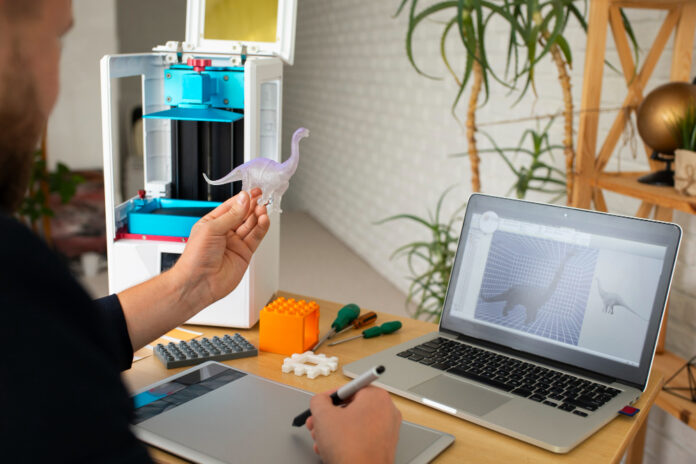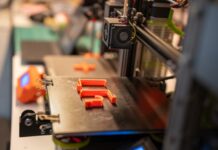In the vast expanse of graphic arts, screen printing emerges as a craft that perennially reinvents itself, ceaselessly absorbing new techniques and technologies. This article delves into the innovative methodologies that are reshaping the screen printing landscape, providing a glimpse into the future of this venerable art form.
The Evolution of Screen Printing
Screen printing, a technique that dates back to ancient China, has traversed a long and colorful path to become the vibrant sector of the printing industry it is today. Over the years, it has been continually refined and redefined by the advent of new materials and digital technologies, ensuring its place at the forefront of the printing world.
Digital Integration: A Leap Forward
The integration of digital processes stands as a significant leap forward in screen printing. Digital screen-making techniques, unlike the conventional methods that are labor-intensive and time-consuming, offer precision and speed. These involve direct-to-screen (DTS) imaging systems that project a digital image directly onto the screen, eliminating the need for film positives and streamlining the entire pre-press process.
Advances in Inks and Eco-friendly Solutions
The development of new inks and sustainable practices is another arena where screen printing is witnessing substantial innovation. The market now offers inks with novel properties, such as increased durability and enhanced color vibrancy. Additionally, heightened environmental awareness has given rise to eco-friendly inks, which are devoid of volatile organic compounds (VOCs) and other harmful substances. These advancements not only bolster the quality and aesthetic appeal of prints but also contribute to a greener planet.
Automated Screen Printing Systems
Automation has swept through the screen printing industry like a wave, transforming it with machines that can autonomously handle repetitive tasks. These systems vary from semi-automated to fully automated presses, capable of high-volume production with minimal human intervention. This automation is not just about speed; it also brings consistency and reliability to the printing process, leading to fewer errors and a higher-quality final product.
The 3D Printing Convergence
A particularly exciting development is the convergence of screen printing with 3D printing technologies. This fusion has given birth to screen printing techniques that can create tactile, three-dimensional effects on a variety of substrates. It opens up a new dimension of possibilities for designers and artists to explore, from textured wallpapers to embossed wearables.
Specialty Materials: Expanding the Substrate Spectrum
In the pursuit of innovation, screen printers are continually experimenting with a broader range of substrates. The industry has seen a significant rise in printing on unconventional materials such as metals, plastics, and even glass. These materials require special inks and treatment processes, but the results can be stunningly unique and versatile, extending the applications of screen printing far beyond traditional textiles and paper.
Interactive Prints: The Future of Engagement
The future shines brightly on interactive prints—screen-printed materials that respond to external stimuli. Think T-shirts that change color with temperature fluctuations or posters that light up when touched. These innovations are powered by the integration of electronic components into the Screen Printing process, paving the way for an interactive experience that captivates the senses.
Tailoring Techniques for Customization
Customization is a driving force in the evolution of screen printing. With the rise of bespoke products, screen printing has adapted to accommodate short runs and on-demand printing. This shift is largely facilitated by modular screen printing stations, which offer the flexibility to change graphics quickly and efficiently. Tailoring techniques to meet the demands of customization not only cater to a niche market but also establish screen printing as a viable option for personalized products.
Software for Smarter Production
In the realm of software, intelligent production management systems are becoming essential tools for screen printers. These systems optimize workflow, from design to dispatch, and provide real-time data that helps in making informed decisions. By analyzing production patterns and identifying bottlenecks, these smart systems ensure that screen printing businesses stay competitive and efficient.
Educational Outreach and Workshops
As the technology evolves, so does the need for skilled practitioners. The industry is responding with a surge in educational outreach and workshops aimed at fostering a new generation of screen printers. These programs not only teach the technical skills necessary to navigate the evolving landscape but also encourage creative experimentation with the medium.
Ethical Production and Fair Trade Practices
The screen printing industry is also becoming increasingly conscious of its social and ethical footprint. Many businesses are embracing fair trade practices and striving for ethical production methods. This commitment to social responsibility resonates with consumers and is becoming a core value for many screen printing operations.
Looking Ahead: The Artistic and Commercial Symbiosis
As we look to the future, it is evident that screen printing maintains a delicate balance between artistic expression and commercial viability. The continuous influx of new techniques and technologies ensures that screen printing remains relevant and vibrant. Whether through the delicate layering of inks or the precise application of prints onto unconventional materials, screen printing stands as a testament to the harmony between tradition and innovation.
In a world that is rapidly digitizing, the tactile nature of screen-printed products offers a respite, a touch of the human hand in an increasingly automated society. From wearable art to architectural installations, screen printing stretches the limits of imagination, proving that even the oldest of crafts can find new life in the modern age.
Final Thoughts
Innovation in screen printing is not just about the adoption of new technologies; it is about the foresight to blend tradition with innovation, art with science, and craftsmanship with automation. As screen printing continues to evolve, it promises to bring forth a tapestry of techniques and technologies, each interwoven with the threads of human creativity.
In conclusion, the vibrant evolution of screen printing, marked by its adoption of new technologies and techniques, reflects a dynamic industry poised for future growth and artistic exploration. The keyword is not just ‘screen printing,’ but rather, ‘innovation in screen printing,’ a phrase that captures the essence of this transformative journey.














![How to Fix [pii_email_57585d6cf4028389f7c9] Error Code? [pii_email_57585d6cf4028389f7c9]](https://www.techwebtopic.com/wp-content/uploads/2022/02/pii_email_57585d6cf4028389f7c9.jpg)
